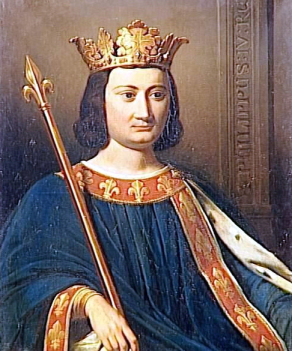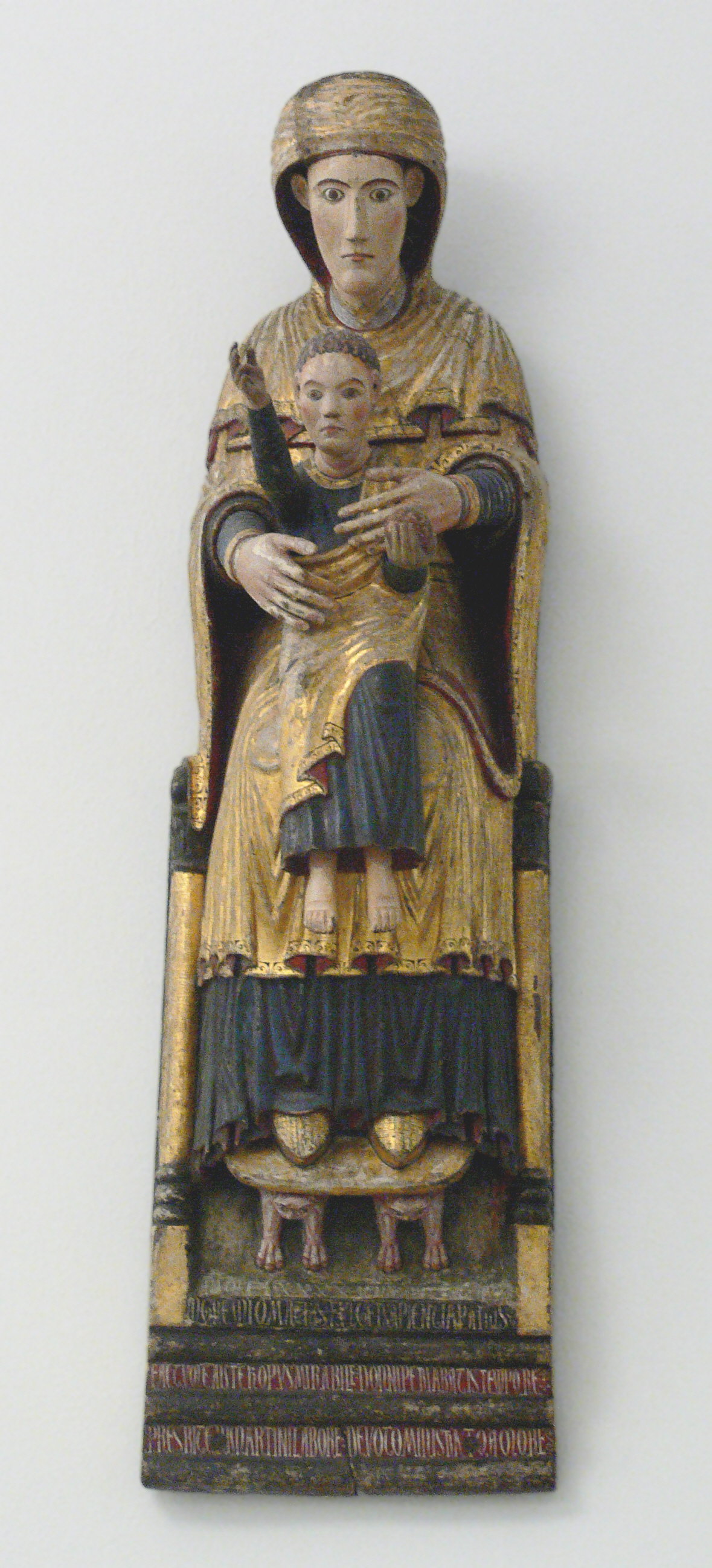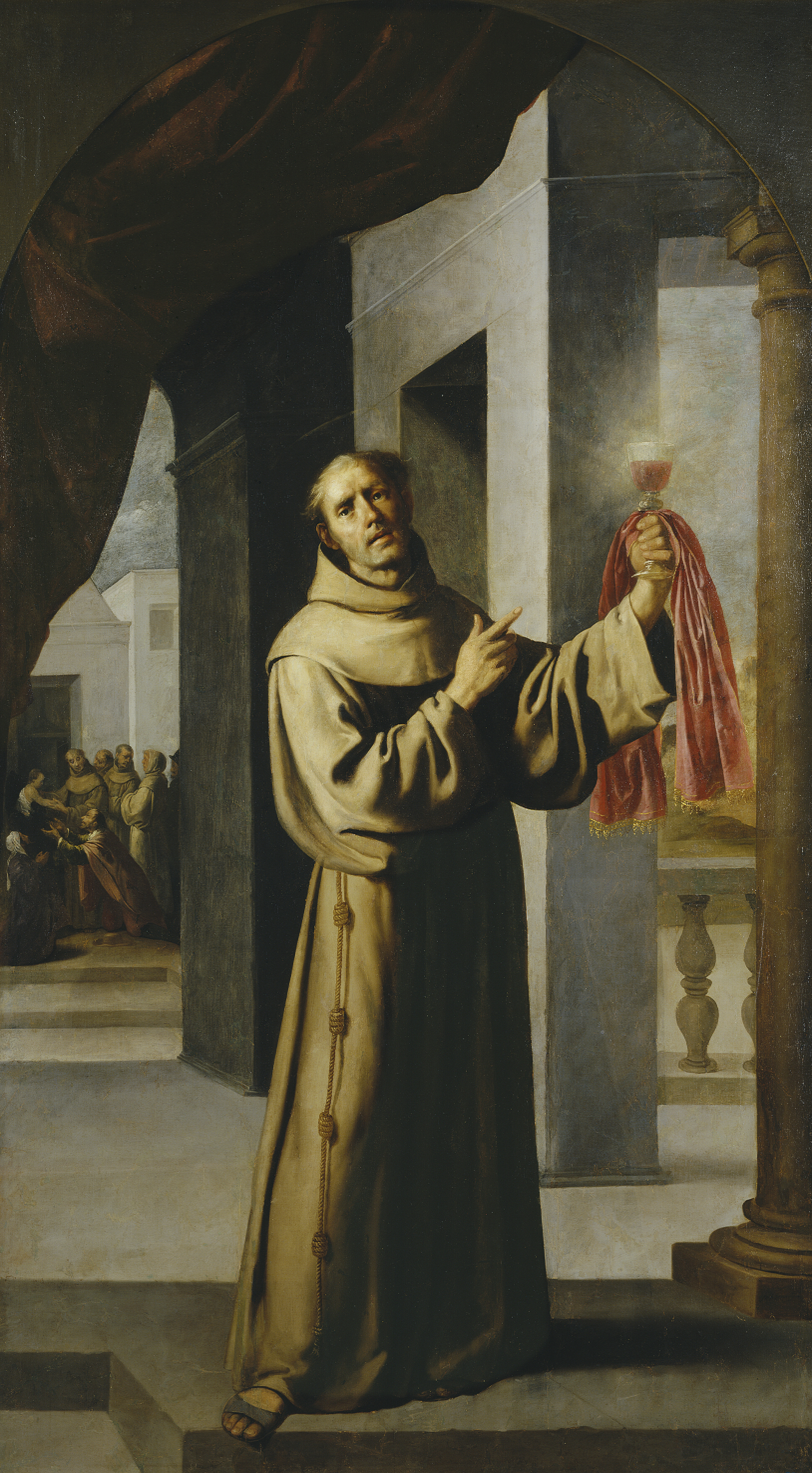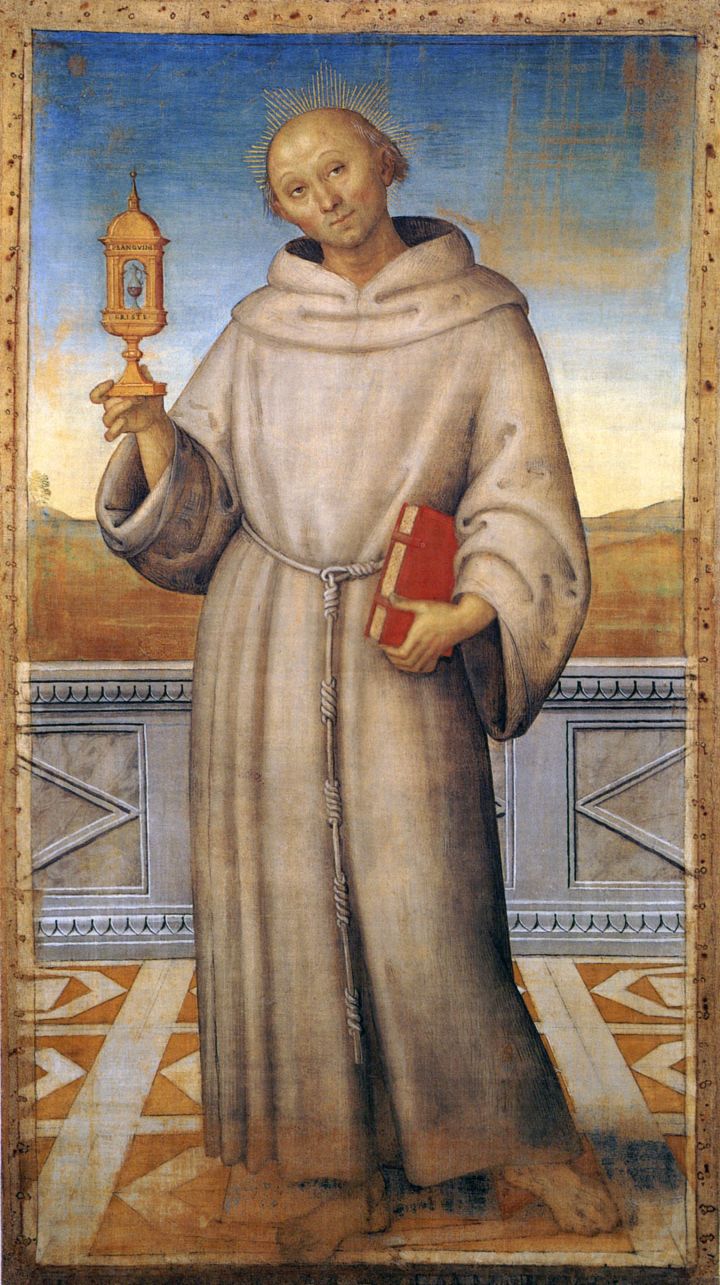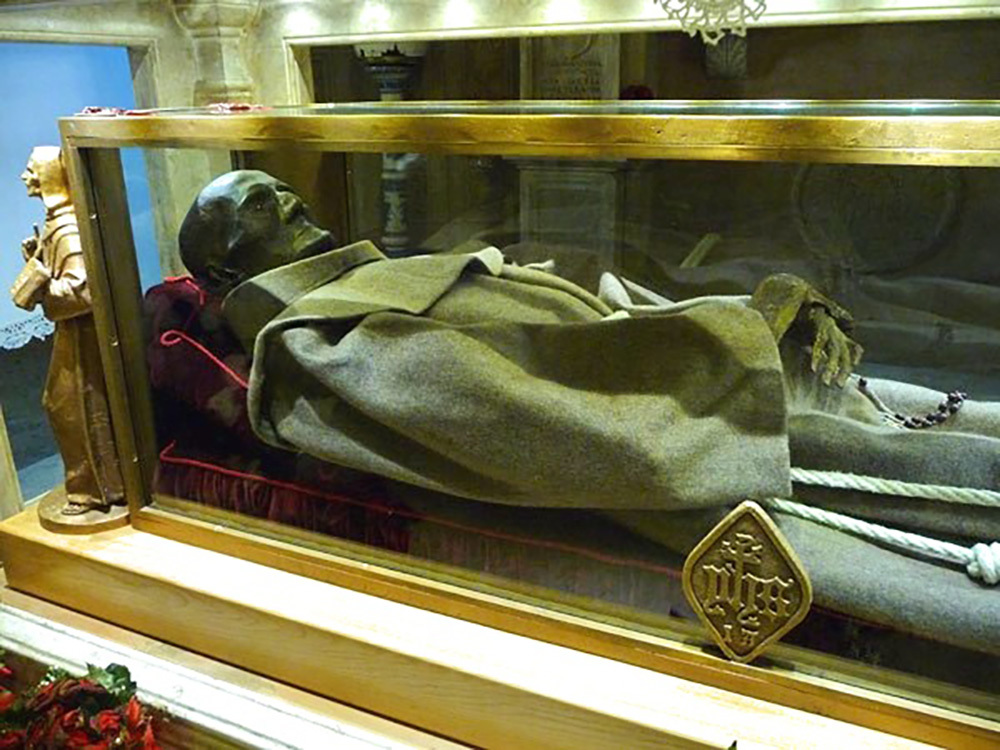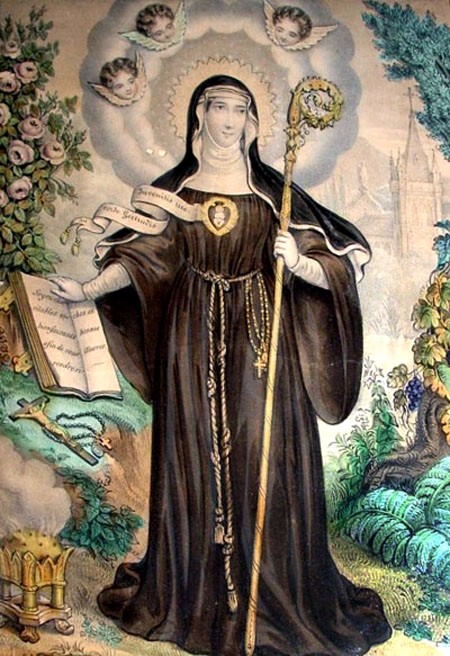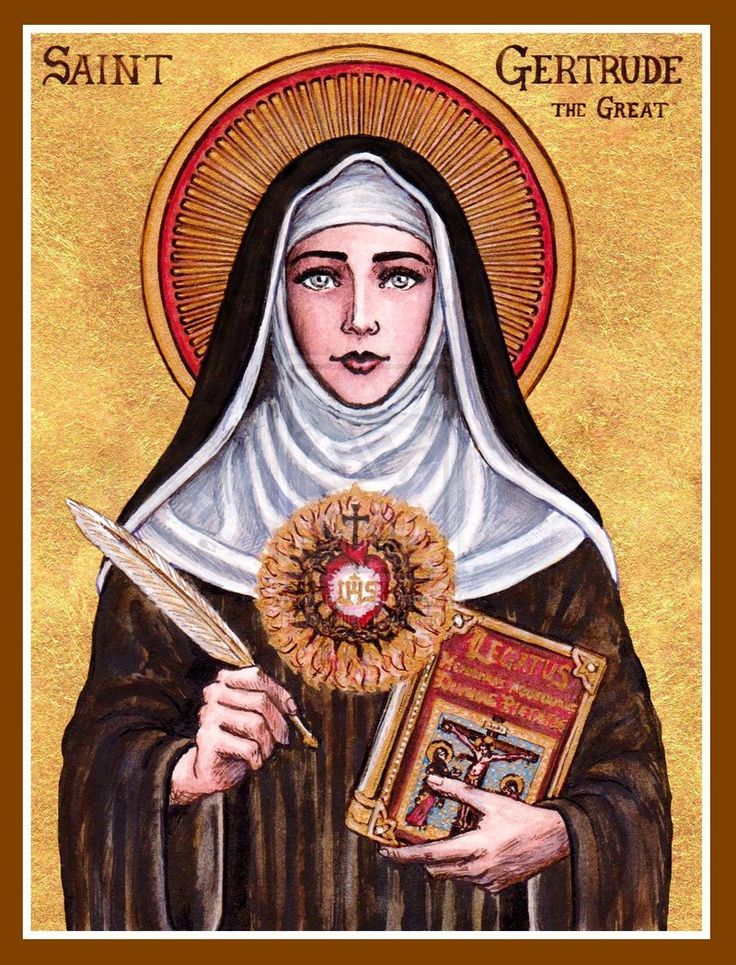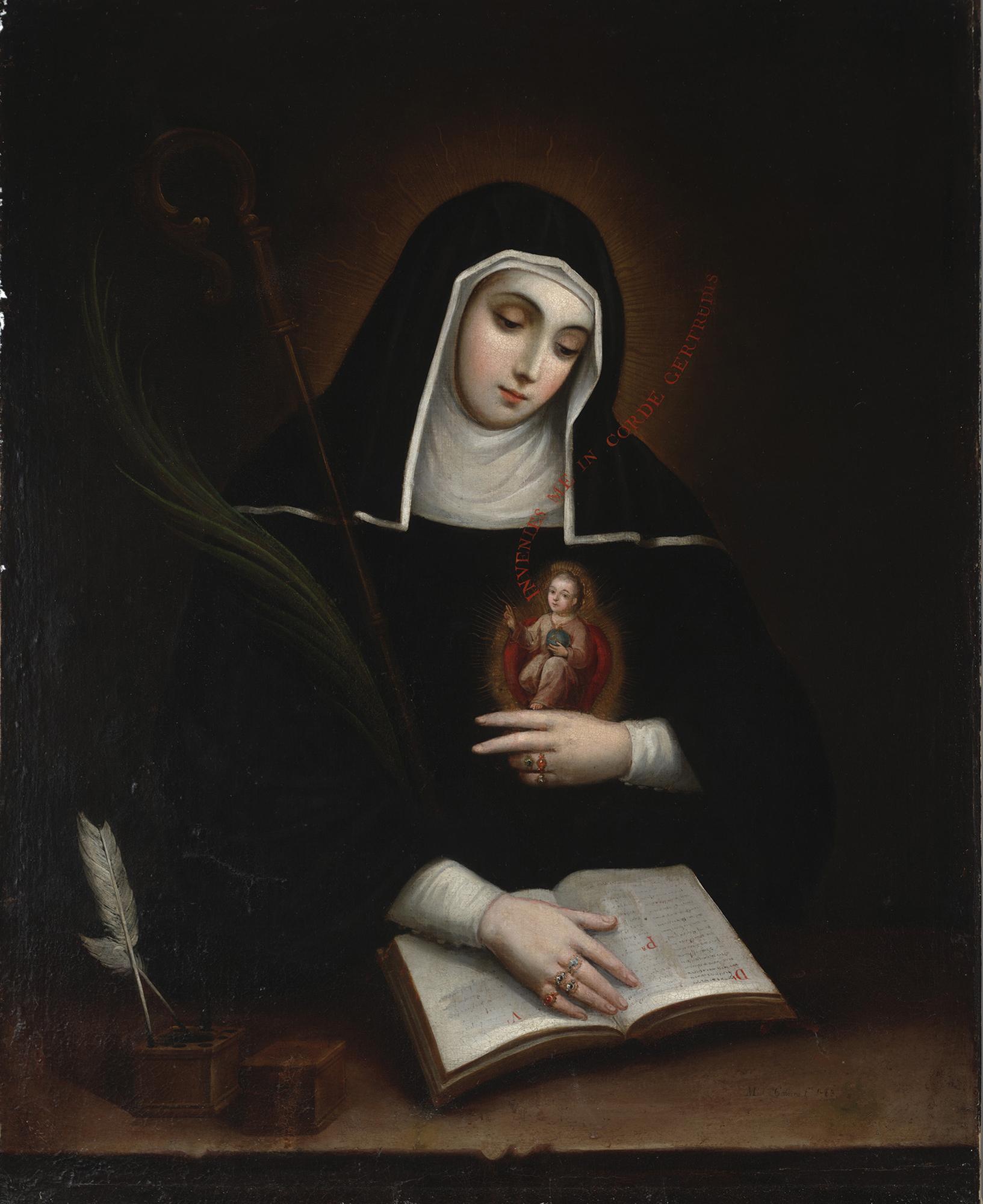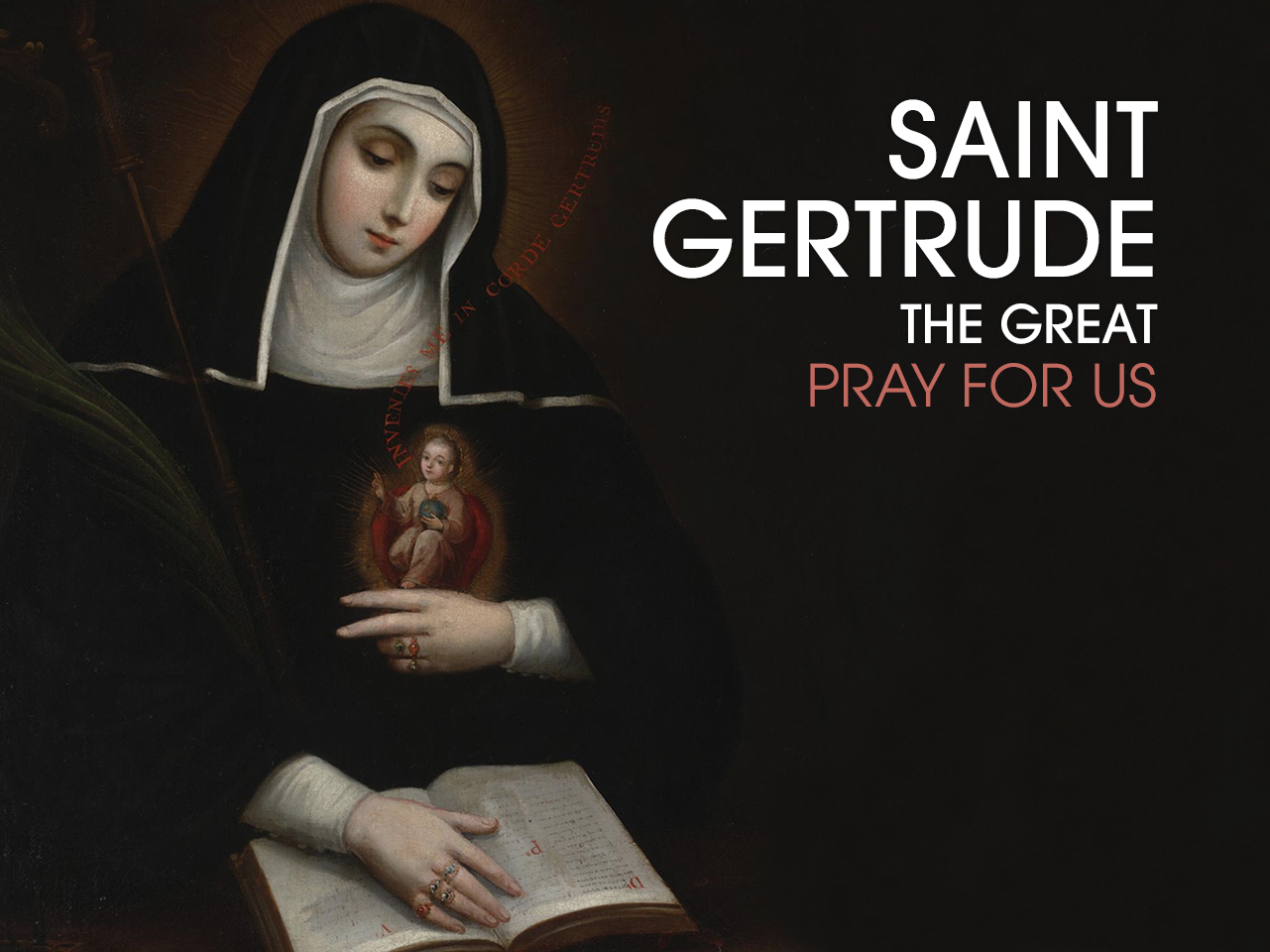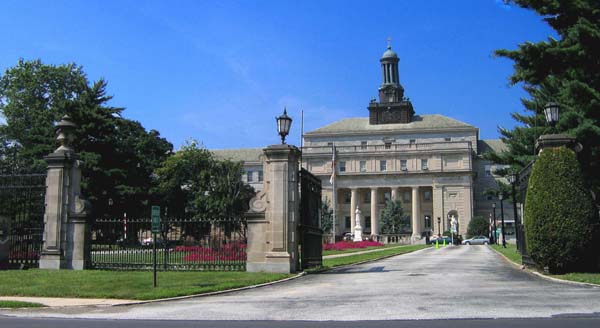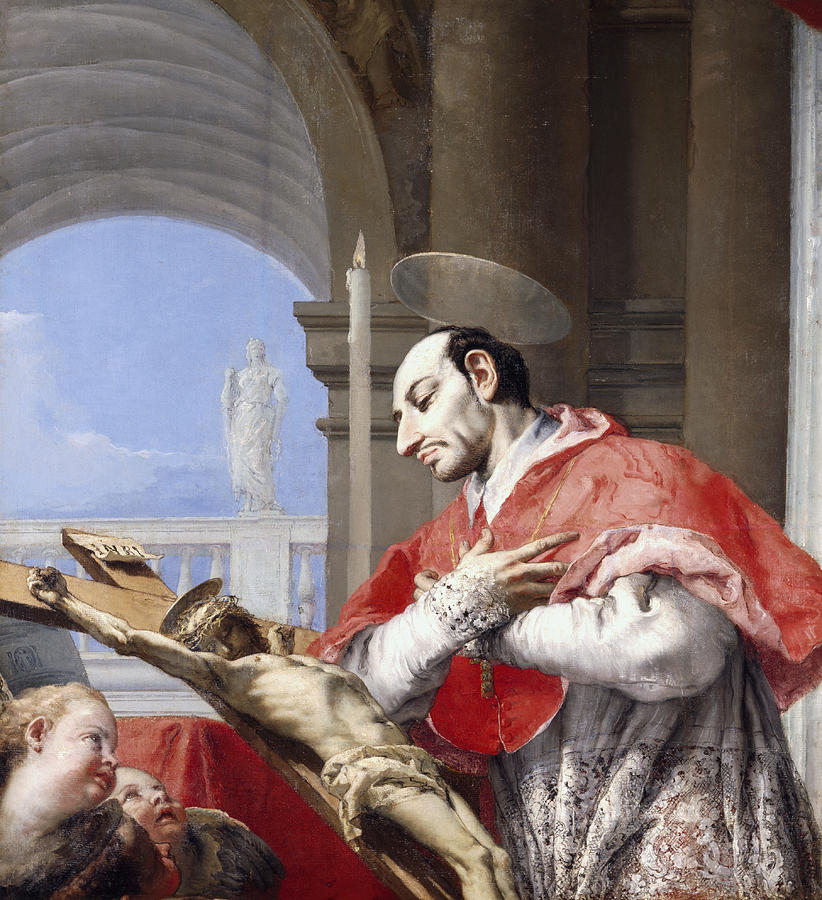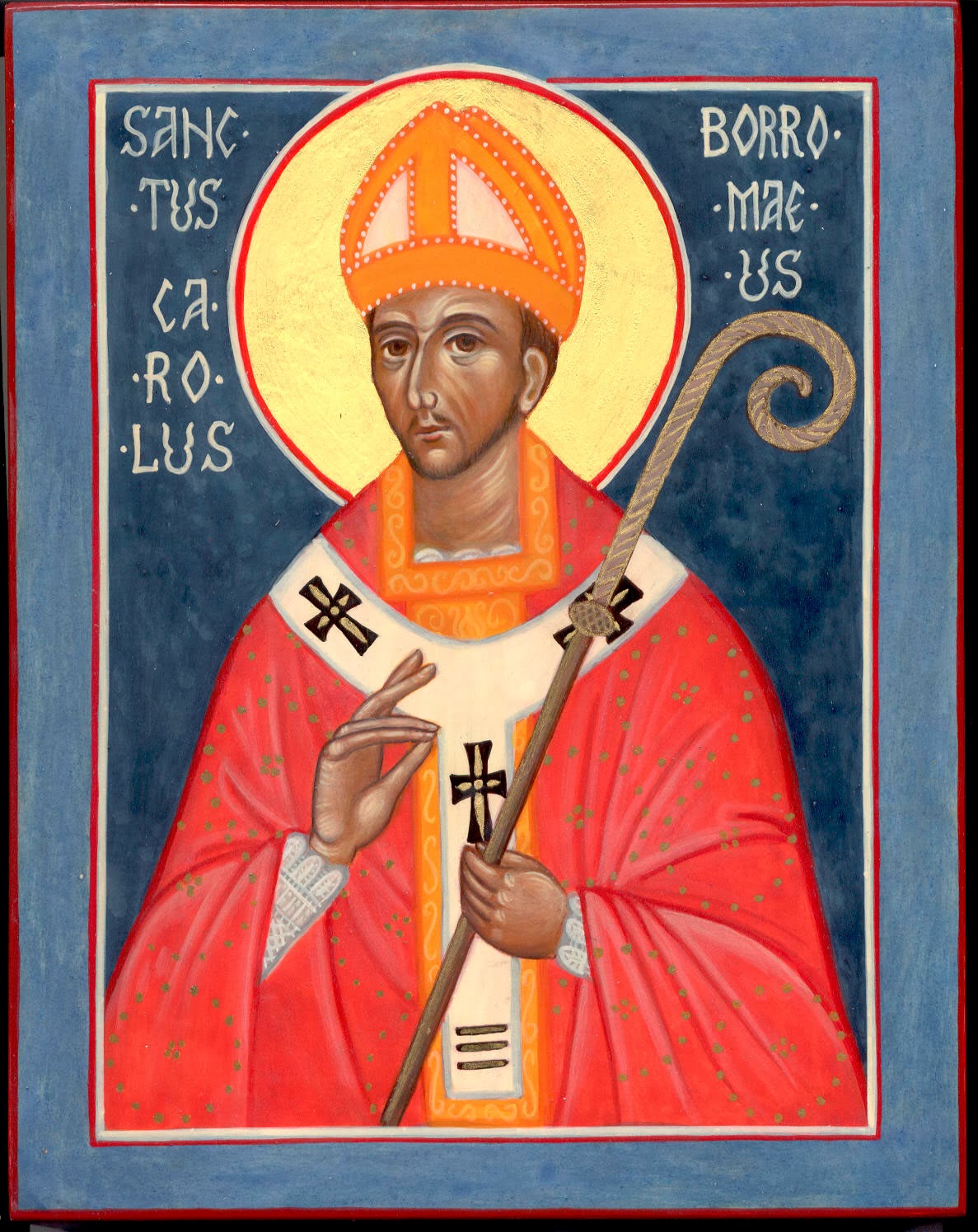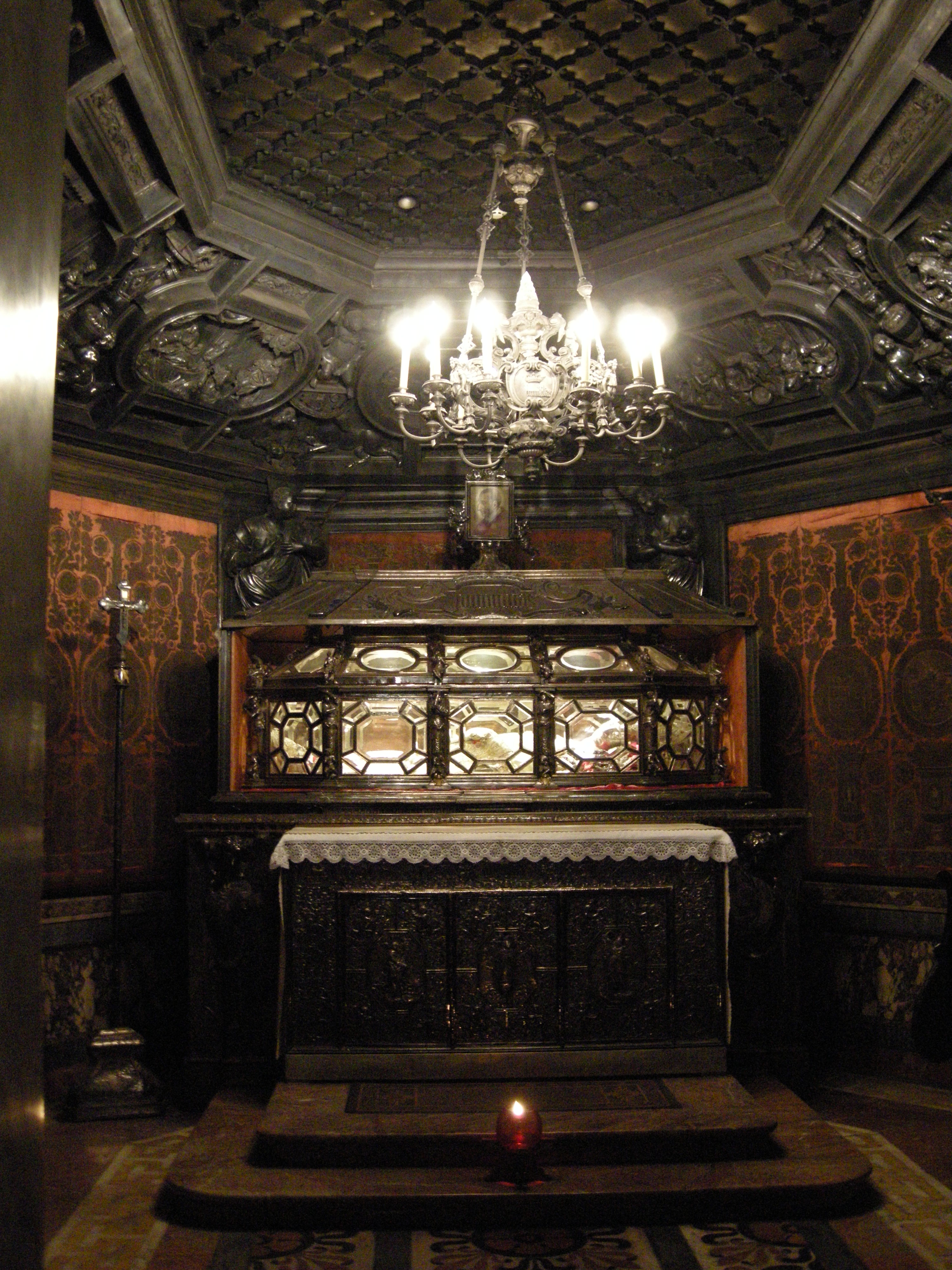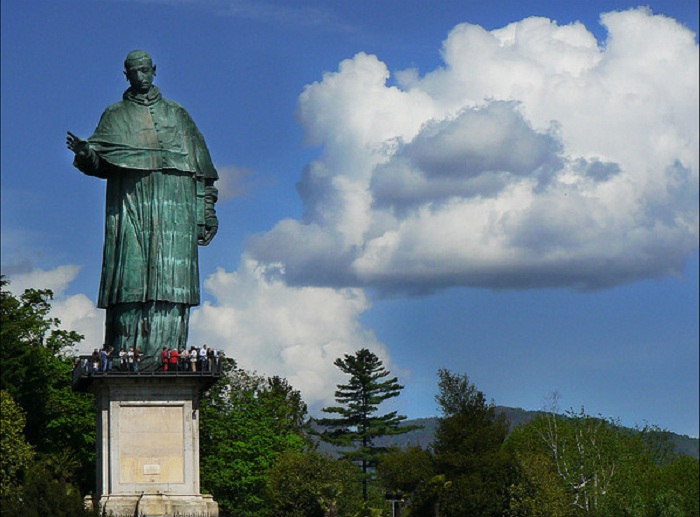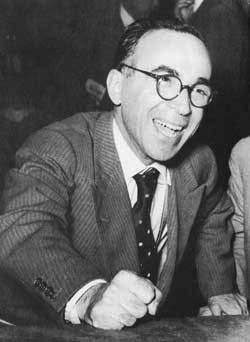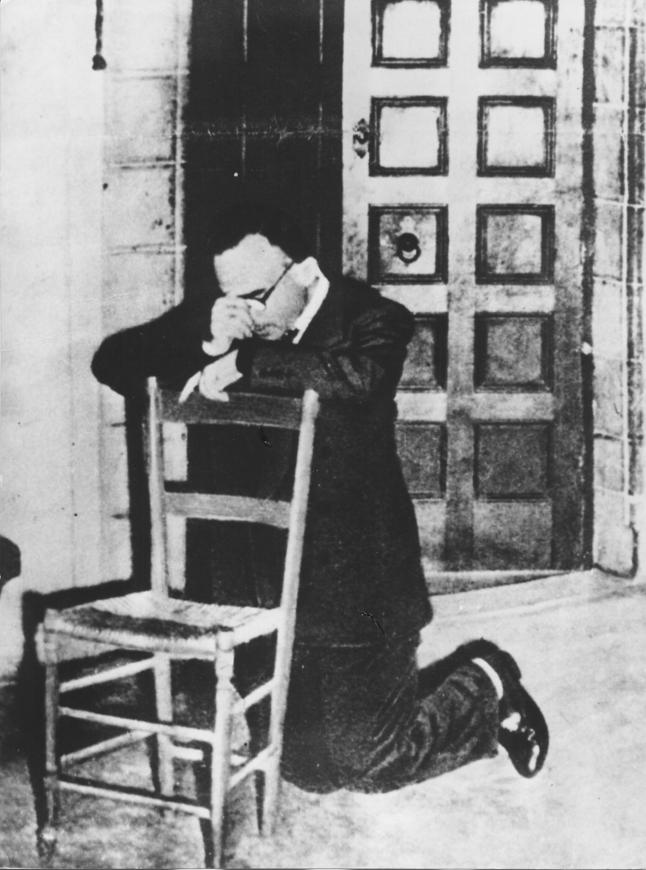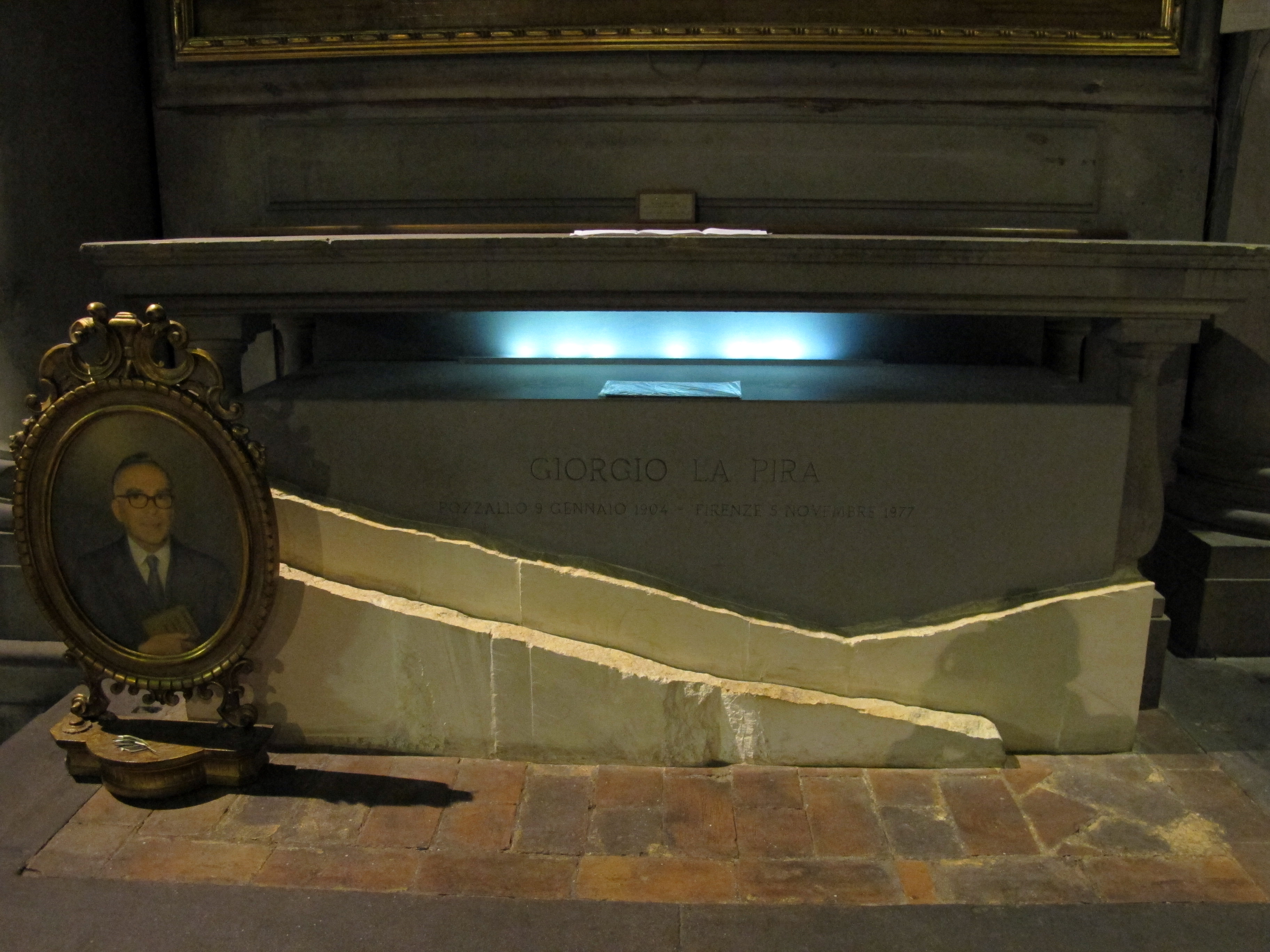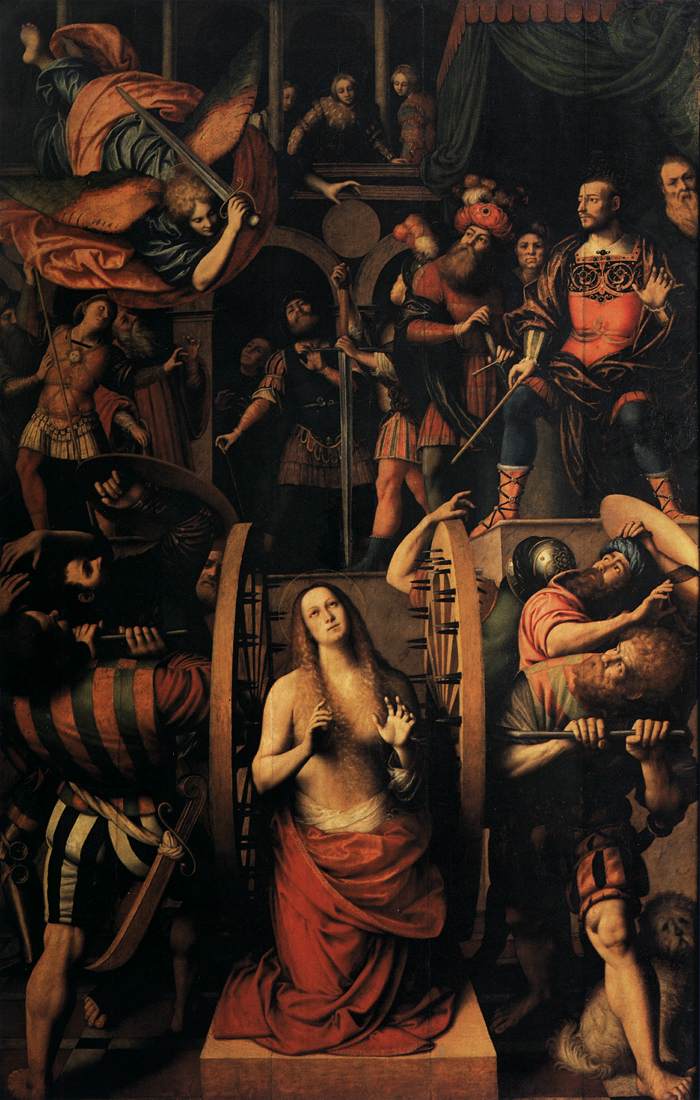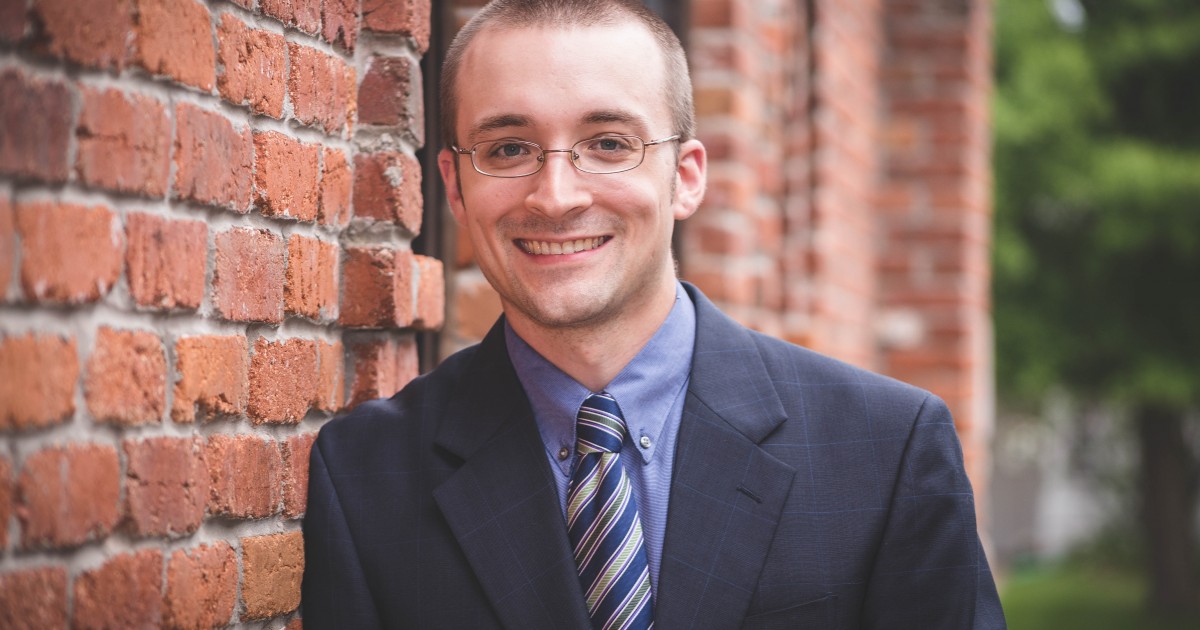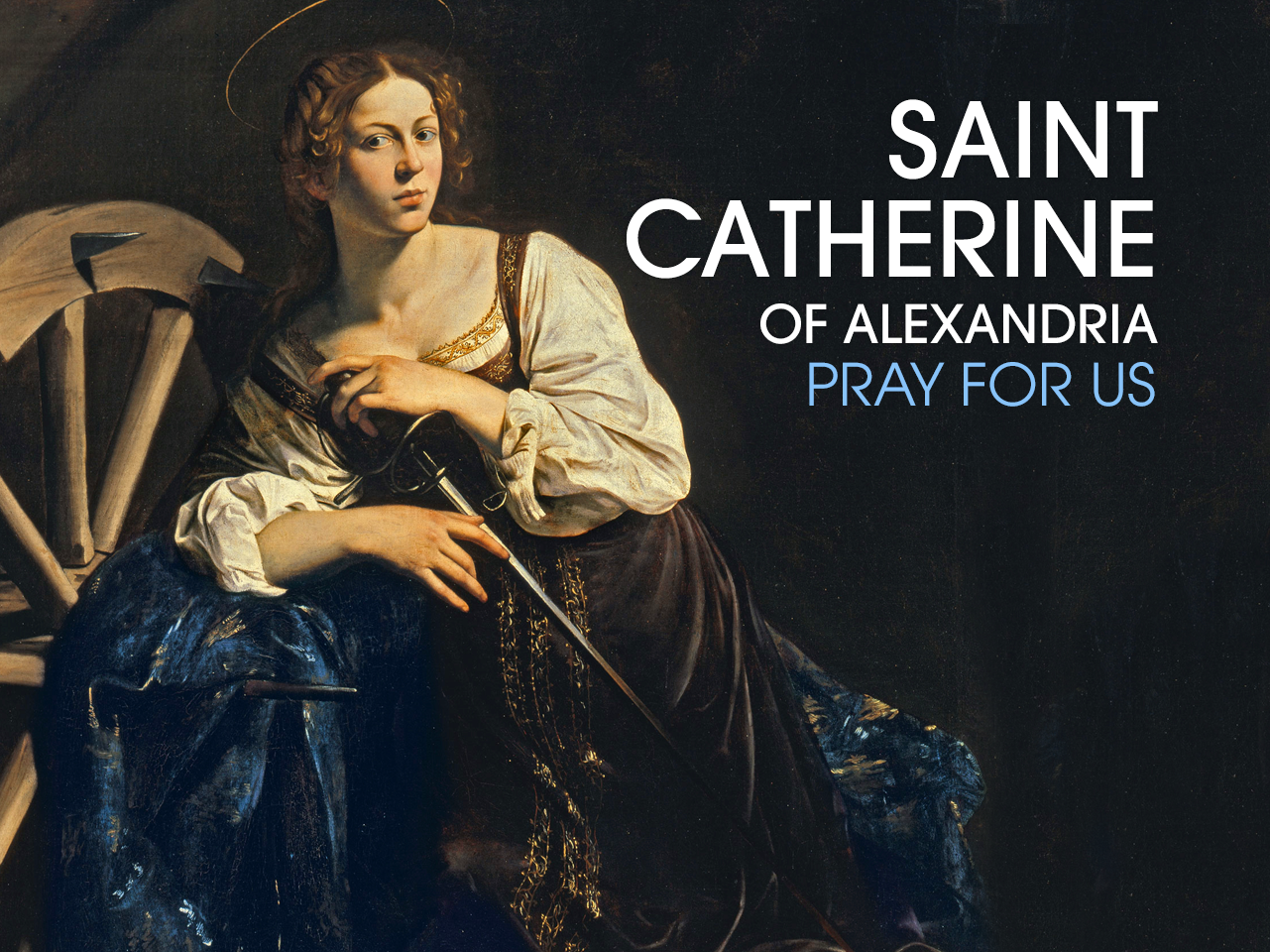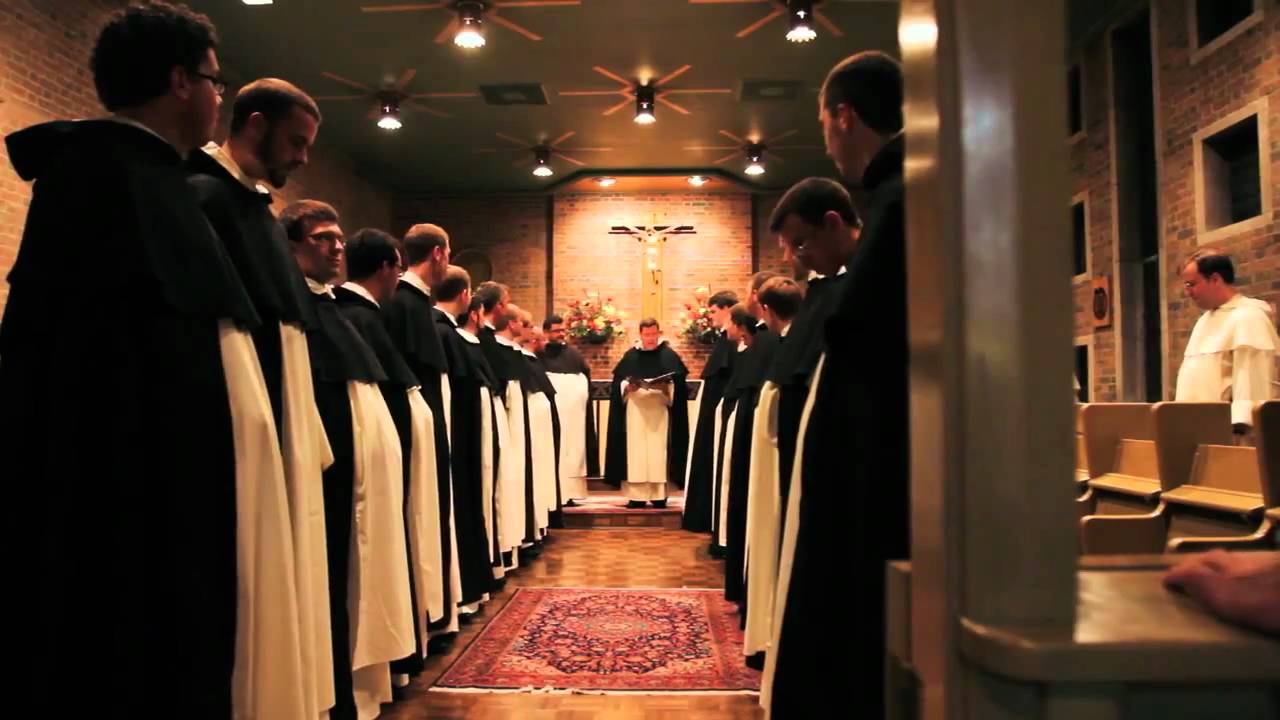You may have heard of the Knights Templar in scandal-invecting modern fiction such as The DaVinci Code, et al. Blessed John was a contemporary and was affected by the intrigues of King Phillip the Fair of France. We fear, through superstition, whenever the 13th of a month falls on a Friday thanks and due to Phillip’s persecution, unjustified, of the Knights Templar on Friday, October 13, 1307.
His most famous victim, Templar Grand Master, Jacques de Molay, cried out from the flames as he was burning March 18, 1314 about Pope Clement, who had acquiesced to Philip’s avaricious and power-seeking threats and demands, and Philip, who owed the Templars A LOT of money! Why pay them if you can just kill them and seize their property? The Templar Grand Master cried out from the flames that Pope Clement and King Philip would soon meet him before God: “Dieu sait qui a tort et a pëché. Il va bientot arriver malheur à ceux qui nous ont condamnés à mort” = “God knows who is wrong and has sinned. Soon a calamity will occur to those who have condemned us to death.” Pope Clement died only a month later, and King Philip died in a hunting accident before the end of the year.
-King Phillip IV (the Fair = pretty, not just), 1268-1314
Blessed John Duns Scotus, a Franciscan priest and theologian of the 13th century, next to St. Bonaventure, is perhaps the most important and influential theologian in the history of the Franciscan Order. He was the founder of the Scotistic School in Theology, and until the time of the French Revolution his thought dominated the Roman Catholic faculties of theology in nearly all the major universities of Europe. He is chiefly known for his theology on the Absolute Kingship of Jesus Christ, the Immaculate Conception of the Blessed Virgin Mary, and his philosophic refutation of the evolution of morality. The doctrines for which he is best known are the “univocity of being,” that existence is the most abstract concept we have, applicable to everything that exists; the formal distinction, a way of distinguishing between different aspects of the same thing; and the idea of haecceity, the property supposed to be in each individual thing that makes it an individual. Scotus also developed a complex argument for the existence of God.
Bl. John Duns Scotus was born in Duns, Berwickshire, Scotland, around 1265. He was immediately baptized after birth and was named after St. John the Evangelist. He received a solid Christian formation from home and from the parish priest. He frequented the Cistercian Abbey of Melrose for his catechism lessons. There, he absorbed the ardent love for the Mother of God which St. Bernard had left as a patrimony to the Cistercians.
As a little boy, Bl. John suffered very much from the obtuseness of his intellect. He wanted to read, to write and to study the profundity of the truths of the Faith, but his mind just could not manage to learn or understand anything. By means of with prayers and sighs, he had recourse to Mary, the Seat of Wisdom, asking her to heal his dullness so that he could advance in his studies. Mary appeared to him and granted his request. Going back to school, the “pea-brained” could only astonish his classmates and teachers. Bl. John resolved to make use of the heavenly gift of sublime intelligence, above all, to glorify the sweet and glorious Virgin Mary, treasurer of every good.
In Roman Catholicism, the epithet (in its positive sense, as in a title) “the Seat of Wisdom” or “Throne of Wisdom” (Sedes Sapientiae) is identified with one of many devotional titles for the Mother of God. In ancient times, authority “sat” and everyone else stood. That is why thrones were important. The only one(s) who sat were the most important ones in the room. We still carry this concept in our language as in “chairman”. In church or in Roman court, the judge sat, i.e. “all rise!”, and celebrants in church sat, parishioners stood. Universal pews in church are a recent Protestant invention. Thank you! You can still see evidence of this in the great cathedrals of Europe where impermanent wooden benches occupy the space previously for the standing congregation.
The phrase, “Seat of Wisdom”, which was characterized in the 11th and 12th centuries, by St Peter Damian and Guibert de Nogent as likening Mary to the Throne of Solomon, refers to her status as a vessel of the Incarnation, carrying the Holy Child. As the phrase associates the Blessed Virgin with glory and with teaching, Madonna-images in this tradition are especially popular in Catholic imagery.
Mary, Seat of Wisdom
In Christian iconography, Sedes Sapientiae (“The Throne of Wisdom”) is an icon of the Mother of God in majesty. When the Virgin is depicted in sedes sapientiae icons and sculptural representations, she is seated on a throne, with the Christ Child on her lap. This type of madonna-image, appeared in a wide range of sculptural and, later, painted images in Western Europe, especially about 1200.
In these representations, some structural elements of the throne invariably appear, even if only handholds and front legs. For hieratic purposes, the Virgin’s feet often rest on a low stool. Later, Gothic sculptures of the type are more explicitly identifiable with the Throne of Solomon, where: “…two lions stood, one at each hand. And twelve little lions stood upon the six steps on the one side and on the other.” (I Kings 10: 18–20, repeated at II Chronicles 9: 17–19) The Sedes Sapientiae icon also appeared in illuminated manuscripts, and Romanesque frescoes and mosaics, and was represented on seals.
-Madonna as Seat of Wisdom, January, 1199, poplar wood, from the Camaldolese abbey in Borgo San Sepolcro near Arezzo, Italy. The inscription reads, in part, “On the mother’s bosom shines the wisdom of the Father.”
At the age of 15, Bl. John entered the novititate of the Order of Friars Minor (the Franciscans) at Dumfries, in the Kingdom of Scotland. There he made praiseworthy progress day by day in piety and in seraphic virtue. After a year he consecrated himself to God by the religious profession of the vows of poverty, chastity and obedience. He was then sent for his studies in various theological schools of the Order. He was ordained a priest by Msgr. Oliver Sutton, Bishop of Lincoln, England, on March 17, 1291, at the church of St. Andrew of the Monks of Cluny. After his ordination, he began a series of travels between England and France to pursue advanced philosophical and theological studies.
The Blessed Virgin Appears to Bl. John
During the night of Christmas, 1299 at the Oxford Convent, Bl. John, immersed in his contemplation of the adorable mystery of the Incarnation of the Word, was rapt in ecstasy. The Blessed Mother appeared to him and placed on his arms the Child Jesus who kissed and embraced him fondly. This was perhaps the occasion which inspired Bl. John to write so profoundly and fluently on the absolute primacy of Christ and the reason for the Incarnation. Christ’s Incarnation, which is decreed from all eternity even apart from the Redemption, is the supreme created manifestation of God’s love.
Bl. John at the University of Oxford, England
-plaque, University Church, Oxford University, honoring Bl John Duns Scotus, OFM
After about four years of teaching at Oxford and Cambridge, at the end of 1301, Bl. John returned to Paris. He was granted his bachelor’s degree in theology. Later, on the vigil of receiving his doctorate, he had to leave France suddenly, to return to England. Philip, the Fair, in a disgraceful quarrel with Pope Boniface VIII demanded all clerics, nobles religious, bishops and the University of Paris to appeal to the Council against the Pope. Bl. John Duns Scotus, among the few members of the faculty, refused to accede to the wishes of the King, who wanted to tax the Church to finance his war with England, and chose the way of exile, sometime between the 25th and 28th of June 1308.
After a year, the situation abated and Bl. John was back again at the University of Paris where he received the doctorate in theology and thus inaugurated his official professorship which was to lead him to singular glory among the great medieval scholastics. Soon the fame of his genius and learning spread abroad and students came in great numbers to attend the lectures of the new master. On account of his habit of making refined distinctions during theologic argumentation, the title “Subtle Doctor”(Doctor Subtilis) was conferred on him by his contemporaries.
Rodulphus wrote of him: “There was nothing so recondite, nothing so abstruse that his keen mind could not fathom and clarify; nothing so knotty, that he like another Oedupus, could not unravel, nothing so fraught with difficulty or enveloped in darkness that his genius could not expound.” Another author wrote: “He described the Divine Nature as if he had seen God; the celestial spirits as if he had been an angel; the happiness of the future state as if he had enjoyed them; and the ways of Providence as if he had penetrated into its secrets.”
Bl. John’s Defense of the Immaculate Conception
It was also in Paris that Bl. John came to be called as the “Marian Doctor” after he championed the privilege of Mary’s Immaculate Conception. In England, Bl. John taught the truth of this Marian privilege without any opposition. But at Paris the situation was reversed. The academic body of the University admitted only the purification of Mary in the womb of Her mother St. Anne, like St. John the Baptist.
Alexander of Hales, St. Bonaventure, St. Thomas Aquinas, the great Parisian Masters, were not able to solve the problem of the universality of original sin and of the efficacy of Christ’s Redemption. They thought that even the Blessed Virgin Mary was included in this universality, and therefore subject to contract the original stain even if only for an instant, so that she may also be redeemed.
Scotus in his attempt to introduce and teach a theological position different from that upheld by the university, had to appear in a public dispute before the whole academic body, at the risk of expulsion from the university if he failed to defend his doctrine. Bl. John Scotus prepared himself for the event in prayer and recollection and in total confidence to the Immaculate Virgin, the Seat of Wisdom.
When the fixed day of the dispute arrived, on leaving the convent, he passed before a statue of Our Lady as we might pass before the photo of a loved one and recall them to mind, and with suppliant voice entreated her: “Allow me to praise You, O Most Holy Virgin; give me strength against your enemies.” Our Lady responded with a prodigious visible sign: the head of the statue moved and bowed slightly before him. It was as if to say: “Yes I will give you all the strength you need.”
Two Papal legates presided over the dispute. Then with powerful dialectic and with deep and subtle reasoning, Bl. Scotus refuted all the objections of the learned men in attendance, undermining the foundation of every argument contrary to Mary’s Immaculate Conception. Bl. John Scotus pointed out: “The Perfect Redeemer, must in some case, have done the work of redemption most perfectly, which would not be, unless there is some person, at least, in whose regard, the wrath of God was anticipated and not merely appeased.” Bl. John triumphed. From that day the University of Paris took up the same cause to defend this privilege of the Blessed Virgin Mary.
The following hymn is a Christian hymn from the 4th century AD. It is one of the five antiphons for the psalms of Second Vespers for the Feast of the Immaculate Conception, Dec 8, nine months before the Feast of the Nativity of Mary, or the day Mary’s birthday is celebrated in the Church, Sep 8. It takes some text from the deutero-canonical book of Judith, and other text from Song of Songs (Solomon), specifically 4:7.
Tota pulchra es, Maria,
et macula originalis non est in te.
Vestimentum tuum candidum quasi nix, et facies tua sicut sol.
Tota pulchra es, Maria,
et macula originalis non est in te.
Tu gloria Jerusalem, tu laetitia Israel, tu honorificentia populi nostri.
Tota pulchra es, Maria.
You are all beautiful, Mary,
and the original stain [of sin] is not in you.
Your clothing is white as snow, and your face is like the sun.
You are all beautiful, Mary,
and the original stain [of sin] is not in you.
You are the glory of Jerusalem, you are the joy of Israel, you give honor to our people.
You are all beautiful, Mary.
Bl. John’s Death and Beatification
Bl. John Duns Scotus had to leave the university at Paris one more time, partly for some political reasons and partly because some doubts had been cast on his theology by opponents. The Franciscan Minister General sent Scotus to Cologne, Germany, where he lectured for some time in the Franciscan house of studies until his untimely death on 8th November, 1308, barely 43 years of age. He was called “blessed” almost immediately after his death.
Bl John Duns Scotus is buried in the Church of the Franciscans in Cologne, Germany. His sarcophagus bears the Latin inscription: “Scotia me genuit. Anglia me suscepit. Gallia me docuit. Colonia me tenet. = “Scotland brought me forth. England sustained me. France taught me. Cologne holds me.” According to an old tradition, Scotus was believed eventually to have been buried alive following his lapse into a coma, a common hazard until modern times, i.e. Edgar Allen Poe.
Through the centuries his tomb has been visited by large numbers of the faithful and public veneration has been offered to him in the dioceses of Edinburgh, Scotland, Nola, Italy, and Cologne, Germany, as well as throughout the Order of Friars Minor (the Franciscans).
The Dunce Cap
The word “dunce” comes from the name of John Duns Scotus, a Scholastic, en.wikipedia.org/wiki/Scholasticism ,whose followers were called “duns” or “dunsmen”. Duns Scotus wrote treatises on grammar, logic, and metaphysics which were widely used as textbooks in the medieval British universities. As the English Renaissance began and the new learning superseded Duns Scotus’ theories, his adherents remained loyal. The word “dunce” then began to be used by humanists to ridicule the Scholastics, gradually acquiring its modern meaning.
Frequently the ‘dunce’ was made to stand in the corner (I remember having to do this, sans the cap), facing the wall as the result of some bad behavior, usually rudeness or mean threatening actions. Depending on the teacher, they might have to stand for as long as half an hour and throwers of spitballs or pulling on a girl’s hair (Heaven!:) ![]() could prompt the measure. Class clowns were frequently admonished with the dunce cap.
could prompt the measure. Class clowns were frequently admonished with the dunce cap. ![]() Who? Me? C’est moi.
Who? Me? C’est moi.
Doctrine of the Immaculate Conception & Beatification of John Duns Scotus
In 1854, Pope Pius IX solemnly declared that the Marian doctrine of Bl. John , was a correct expression of the faith of the Apostles: “at the first moment of Her conception, Mary was preserved free from the stain of original sin, in view of the merits of Jesus Christ.” The seal of the Church’s approval was also placed on Bl. John’s doctrine on the universal primacy of Christ when the feast of Christ the King was instituted in 1925. On March 20, 1992 Bl. John Duns Scotus was beatified by Pope John Paul II at St. Peter’s Basilica in Rome.
Bl. John Duns Scotus, “The minstrel of the Word Incarnate” and “Defender of Mary’s Immaculate Conception” is presented by Pope John Paul II to our age “wealthy of human, scientific and technological resources, but in which many have lost the sense of faith and lead lives distant from Christ and His Gospel,” as “a Teacher of thought and life.” For the Church, Bl John is “an example of fidelity to the revealed truth, of effective, priestly, and serious dialogue in search for unity.” It was also the Holy Father’s hope that “Bl John’s spirit and memory enlighten with the very light of Christ the trials and hope of our society.”
-Bl John Duns Scotus
Intercession of Mary, Seat of Wisdom, is often wisely sought out by students. You know of my particular sympathy/affection for students, especially the ones who have to work a little, or a lot, harder for satisfactory results. God does work miracles! Deo gratias! It’s a miracle! (With a little help from humane professors!) ![]()
Prayer of Students to Mary, Seat of Wisdom
Under your patronage, dear Mother, and calling on the mystery of your Immaculate Conception, I desire to pursue my studies and my literary works: I hereby solemnly declare that I am giving myself to these studies chiefly with the following goal: that I may the better contribute to the glory of God and to the promotion of your veneration among men. I ask you, therefore, most loving Mother, who are the Seat of Wisdom, to bless my work in your loving-kindness. I also promise with true affection and a willing spirit, as it is right that I should do, to ascribe all the good that shall come to me from my studies, wholly to your intercession for me in God’s holy presence.
Amen.
Consecration of Students to Mary, Seat of Wisdom
O Mary, Seat of Wisdom, so many persons of common intellect have made, through your intercession, admirable progress in their studies.
I hereby choose you as guardian and patron of my studies. I humbly ask you to obtain for me the grace of the Holy Spirit, so that from now on I could understand more quickly, retain more readily, and express myself more fluently. May the example of my life serve to honor you and your Son, Jesus. Amen.
Prayer of Thanksgiving for the wisdom Blessed John Duns Scotus
Heavenly Father, you filled Bl. John Duns Scotus with wisdom, and through his life and teaching gave us a witness of Your Incarnate love. May we come to understand more deeply what he taught so that we may live in ever growing charity. Amen.
Prayer for the Canonization of Blessed John Duns Scotus
O Most High, Almightily and gracious Lord, Who exalts the humble and confounds the proud of heart, grant us the great joy of seeing Blessed John Duns Scotus canonized. He honored Your Son with the most sublime praises; he was the first to successfully defend the Immaculate Conception of the Virgin Mary; he lived in heroic obedience to the Holy Father, to the Church and to the Seraphic Order. O most holy Father, God of Infinite Love, hear, we beseech You, our humble prayer, thorough the merits of Your Only-Begotten Son and His Mother, the Gate of Heaven, Seat of Wisdom, and Spouse of the Holy Spirit. Amen.
“The learned will shine like the brilliance of the firmament,
and those who train many in the way of justice
will sparkle like the stars for all eternity.”
-Daniel 12:3
Love,
Matthew


